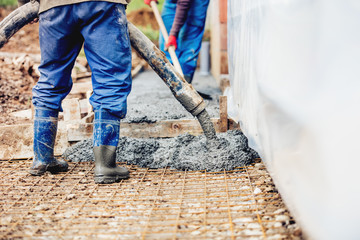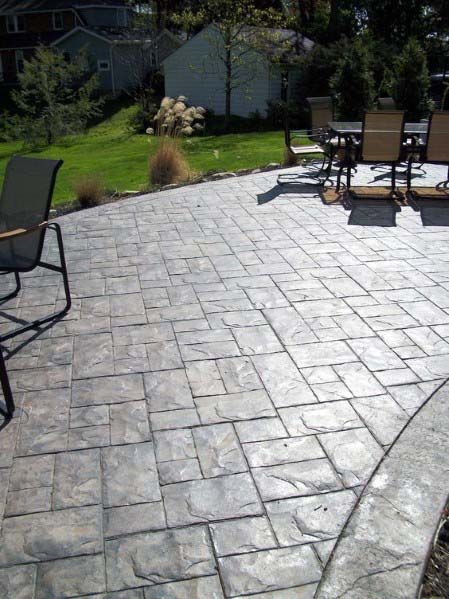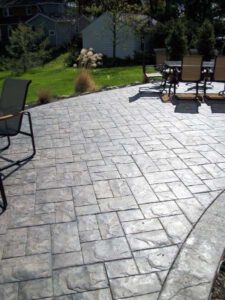Finding skilled concrete contractors ensures durability and strength in construction projects. Concrete is a versatile material used in various structures. Professional handling ensures proper mixing, pouring, and curing. Quality workmanship extends the lifespan of concrete surfaces.
Concrete Contractors McKinney TX handle different types of projects. Foundations, driveways, sidewalks, and patios require specific techniques. Each project demands precise preparation and execution. Professional contractors manage these requirements efficiently.
Site preparation is critical for concrete installation. Uneven ground or poor soil quality affects stability. Contractors assess the site and make necessary adjustments. Proper grading and compacting prevent future issues.
Concrete mixing requires precise ratios of cement, water, and aggregates. Incorrect mixing weakens the structure. Professional contractors use accurate measurements and mixing equipment. Consistent quality ensures strong and uniform concrete.
Reinforcement enhances concrete strength and flexibility. Steel bars or mesh prevent cracking and improve load-bearing capacity. Contractors position reinforcements carefully before pouring. Proper placement ensures structural integrity.
Pouring concrete requires attention to weather conditions. High temperatures, wind, and humidity affect curing. Contractors monitor conditions and adjust methods as needed. Controlled curing enhances concrete strength.
Formwork provides shape and support during curing. Wood or metal molds hold the concrete in place. Contractors secure formwork to prevent shifting. Proper setup ensures clean lines and accurate dimensions.
Concrete curing involves controlled drying and moisture retention. Rapid drying causes cracks and weak spots. Contractors use curing compounds or coverings to retain moisture. Gradual drying strengthens the concrete.
Finishing creates a smooth and even surface. Troweling and floating remove imperfections and air pockets. Professional contractors achieve consistent textures and finishes. Smooth surfaces improve appearance and performance.
Stamped concrete creates decorative patterns and textures. Contractors use molds and coloring agents for unique designs. Proper technique ensures uniform depth and color. Stamped finishes enhance aesthetic appeal.
Exposed aggregate reveals the texture of stones and pebbles. Contractors wash away the surface layer to expose the aggregate. Proper sealing protects the surface from weather and wear. Exposed finishes provide traction and visual interest.
Concrete staining adds color and depth. Acid-based or water-based stains create unique patterns. Contractors apply stains carefully for even coverage. Sealing preserves color and prevents fading.
Polished concrete creates a high-gloss surface. Grinding and buffing remove imperfections and enhance shine. Professional polishing increases resistance to stains and damage. Glossy finishes improve light reflection and visual appeal.
Concrete overlays repair and enhance existing surfaces. Thin layers of concrete improve appearance and durability. Contractors apply overlays to cover cracks and wear. Reinforced layers extend surface life.
Joint placement controls cracking and movement. Expansion and contraction create stress on concrete. Contractors cut control joints at precise intervals. Proper joint spacing reduces random cracks.
Concrete pumping allows efficient placement in hard-to-reach areas. Large projects require specialized equipment. Contractors use pumps to deliver concrete quickly and accurately. Controlled placement improves consistency and strength.
Concrete contractors handle decorative concrete projects. Stamped, stained, and colored concrete enhance outdoor and indoor spaces. Professional designs create cohesive aesthetics. Decorative finishes improve property value.
Retaining walls provide structural support and prevent soil erosion. Concrete blocks or poured walls hold back earth and water. Contractors design walls to handle pressure and weight. Proper drainage prevents water buildup.
Concrete foundations support the weight of structures. Slab, crawl space, and basement foundations require different techniques. Contractors assess soil conditions and structural load. Proper reinforcement ensures stability.
Concrete sidewalks and walkways enhance safety and accessibility. Even surfaces prevent tripping hazards. Contractors create consistent grades and finishes. Proper slope ensures effective drainage.
Concrete driveways withstand heavy loads and traffic. Reinforced concrete resists cracking and shifting. Contractors use proper sub-base preparation and joint placement. Durable surfaces handle daily wear and tear.
Concrete steps provide safe access to different levels. Proper height and depth ensure comfortable use. Contractors create slip-resistant finishes for safety. Secure steps improve access and stability.
Concrete patios extend outdoor living spaces. Stamped, stained, or polished finishes create visual appeal. Contractors ensure proper drainage and reinforcement. Well-designed patios increase property value.
Concrete pool decks require slip-resistant finishes and water resistance. High moisture levels cause surface damage. Contractors apply sealers and textured finishes. Proper treatment enhances safety and longevity.
Concrete countertops offer durability and customization. Contractors use specialized molds and reinforcement. Polished and stained finishes create unique designs. Sealed surfaces resist stains and scratches.
Concrete repair restores damaged surfaces and structures. Cracks, spalling, and surface wear require professional treatment. Contractors use patching compounds and resurfacing techniques. Proper repair prevents further damage.
Concrete sealing protects against moisture and stains. Penetrating or surface sealers create a protective barrier. Contractors apply sealers after curing and finishing. Sealed surfaces resist weather and chemical damage.
Concrete demolition requires specialized equipment and techniques. Controlled breaking minimizes dust and noise. Contractors remove concrete efficiently and safely. Proper disposal ensures compliance with regulations.
Concrete contractors handle commercial and residential projects. Large-scale projects require precise coordination and execution. Contractors manage scheduling, permits, and inspections. Professional oversight ensures project success.
Concrete cutting allows precise removal and adjustment. Sawing and coring create openings for plumbing and electrical work. Contractors use specialized equipment for clean cuts. Precision cutting maintains structural integrity.
Concrete leveling corrects uneven surfaces. Settling and soil movement cause shifting and sinking. Contractors use foam or slurry injection for correction. Level surfaces improve safety and appearance.
Concrete foundations for industrial buildings require high load capacity. Reinforced footings and slabs handle heavy equipment and traffic. Contractors design foundations to meet structural requirements. Proper curing ensures long-term stability.
Concrete retaining structures manage water flow and soil pressure. Proper slope and drainage prevent erosion. Contractors reinforce walls with steel and drainage channels. Strong structures withstand natural forces.
Concrete barriers provide security and traffic control. Precast or poured barriers handle vehicle impact and pressure. Contractors design barriers for durability and placement. Proper installation ensures long-term performance.
Concrete bridges and overpasses handle heavy traffic and environmental stress. Reinforced concrete resists weather and load changes. Contractors use high-strength materials and curing methods. Quality construction ensures longevity.
Concrete tunnels provide underground access and infrastructure. Controlled pouring and curing prevent cracks and leaks. Contractors use waterproofing and reinforcement. Strong tunnels withstand ground pressure and moisture.
Concrete piers and columns support vertical loads. Reinforced designs handle shifting and pressure. Contractors use deep footings and secure connections. Strong support improves structural balance.
Concrete slabs for industrial floors handle heavy machinery and traffic. Reinforced slabs resist cracking and wear. Contractors use proper joint spacing and finishing. Durable floors improve safety and function.
Concrete sound barriers reduce noise pollution. Precast panels or poured walls absorb sound waves. Contractors design barriers for height and thickness. Proper placement ensures maximum noise reduction.
Concrete dams control water flow and storage. Reinforced structures handle pressure and environmental changes. Contractors use advanced curing and reinforcement methods. Strong dams protect communities and ecosystems.
Concrete spillways manage water release and overflow. Sloped and reinforced designs handle high pressure and volume. Contractors use textured surfaces for erosion resistance. Controlled flow prevents damage.
Concrete floors in warehouses and factories require high strength and resistance. Epoxy coatings improve durability and traction. Contractors prepare and seal floors for heavy use. Proper treatment prevents chemical and impact damage.
Concrete culverts manage stormwater and road drainage. Precast or poured designs handle high flow rates. Contractors use reinforced designs for strength. Proper placement ensures effective water management.
Choosing the right concrete contractor ensures quality, durability, and long-term value. Professional handling improves project outcomes and prevents costly repairs. Skilled contractors manage complex requirements and deliver reliable results. Investing in expert services strengthens structures and enhances overall performance.


